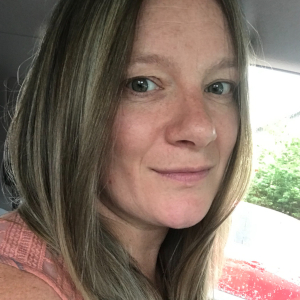Praise For:
Hear directly from our students about the benefits of our program.
-

Dr. Denise Miranda
“I retook the SOT Pediatric Program so I could continue to sharpen my cranial and spinal adjusting skill, gain greater confidence, and deepen my understanding and knowledge of pediatric spinal and cranial assessment.
Three takeaways I received from this course are: 1.Having a detailed history and well-organized examination will lead to better outcomes for the patient. 2. Practice on live models as much as you can to give yourself the hands-on experience you need to become more experienced. 3. Learn from your peers. Their challenges that they present on the Facebook group can give you valuable insight on how to deal with similar challenges that may present to your office in the near future.
I feel like I’ve gained more confidence in myself and in my ability to deliver quality care to my pediatric patient.
I found that if I first cleared the occiput and sphenobasilar junction followed by the temporal and frontal bone in many of my infant patients who presented to my office with chronic issues had amazing results almost immediately. Which in turn, leads to happier mothers and more family involvement in chiropractic care.
I strongly believe this course is a MUST for all chiropractors who want to better serve their pediatric community. It will enhance your professional capability to adjust, assess, and evaluate the pediatric population across various developmental stages.
Having the opportunity to learn from Dr. Rosen and Dr. Watson for the second time was as always, a very rewarding experience. This course continues to provide me with the training I need to support my passion in caring for the pediatric community. I always end up feeling eager and motivated to serve at a greater capacity after completing the course.
I really enjoyed taking this course and I look forward to continuing learning with you both in the many other programs you offer!”
-

Dr. Nicole Wheeler
My three take aways…. This work is much more powerful than I originally thought. For starters, just having a new lens to look through changed my eval and adjusting right away, before even applying any of the SOT techniques. My awareness allowed me to see subtle differences I had not necessarily been aware of; for example, differences in facial structure or even just watching children in my waiting area and how they moved and interacted. I noticed these subtle indicators in adults as well as when they enter the office or walk to the bathroom. I think some folks caught me evaluating their facial structure before a cervical adjustment because I paused longer than usual. Second take away… I need to continue my study of SOT, learning more about the basics and application in the adult population. This is powerful work, and more people need it than I realized. I must deepen my understanding so I may share this work with my entire community. Third… Drs. Rosen and Watson are true experts in the field; wow do I have a lot to learn! Taking this program helped to realize that expecting that I master SOT for the pediatric population by the end of the course is ridiculous. I can be hard on myself for not picking up very detail and learning exactly how to apply them in my day-to-day practice. I promised myself to take it slow and to not get frustrated. In the past I have found it nearly impossible to learn and integrate a new technique during my day-to-day at the office, introducing new techniques can be time consuming and slow the flow and as a solo practitioner with no staff it has been historically challenging. I have yet to be successful at fully integrating a new technique…this time I have promised myself to take it slow and make it happen over time. Principle 6- There is no process that does not require time.
Being patient with myself and allowing the time I need to truly learn and integrate the information. Learning is a process not an event (just like healing). Taking the course has also allowed me to embrace the fact that after almost 17 years of diversified adjusting my longevity requires I have a tool bag of lighter touch techniques that have the desired effect (maybe even more so than diversified adjusting).
A mom who comes regularly with her three children recently reported to me that her 7-year-old son has been complaining of headaches. Headaches so severe that he wasn’t sleeping well and she had to give him an OTC pain reliever to help. I have been adjusting this little guy at least monthly for a couple of years, and this was something new for him. I evaluated the sphenoid and frontal bones as well as the temporomandibular joints, found restriction and tenderness at both the sphenoid and temporal mandibular. After working on these areas as well as applying adjustments in the cervical spine, Vinny and mom reported a reduced incidence and severity of headaches after just one visit integrating SOT techniques. Over the course of the next few weeks, we continued to work in the same fashion and continued to see improvement with a near complete resolution after approximately a month. Vinny has also gotten glasses in the past weeks and with continued chiropractic care he has remained essentially headache free now for the last 2.5 months.
Most certainly I would recommend this course to others! The amount of information presented is a bit overwhelming, I applaud you for the way you have organized and structured the program. Allowing downloads of the transcripts, PowerPoints and Call to Action assignments have made returning to the information accessible and manageable. I’ve also appreciated the Q & A sessions, unfortunately I have not been able to log in live due to conflicts with my office hours, but the replays have been very helpful.
Thank you for combining your wealth of knowledge into a five-star course that has, and will continue to, help me better serve all the members of my community, but particularly the very special little ones.
-
Lizzie Sobel, DC
Great self-paced, small bites at a time way to study and absorb the information -gives you specific techniques but in a larger clinical context for bigger picture -if you want to work with infants and kids or do already, you need to take it
Taking this program has increased my clinical confidence with my pediatric clients, and given me more certainty with my evaluation as well as the way I communicate with the parents of my pediatric clients. as well as pushed me to take steps I was procrastinating in my practice, like making more targeted intake and exam forms for different age groups in my practice.
One of the most dramatic cases in the clinic recently was with a postpartum Mom with migraines and teeth pain that was not dental related. After these corrections her migraines have ceased, and she doesn’t have pain eating any more.
Yes, I would recommend this program. It is so comprehensive and yet extremely convenient to be able to do it each week while on lunch break in the clinic. I always struggle with getting overloaded at 12 hour weekend classes with so much info stuffed into a small period of time. This is much more conducive to my learning, attention, and retention.
I really appreciate you sharing your wisdom and clinical insights. So grateful to be able to learn from you.
-

Skylar Bakko, DC
“Cranials are so important to development. Stabilize the spine first. Check everyone’s cranials.
This program has helped me to take executional care of my child and my wife. It set me apart in the profession.
Had a boy who was having seizures. Started seeing him in January and he hasn’t had a seizure since. Doing mostly cranial work on him.
Yes, I would recommend this program. To be able to make a huge impact on kids and anyone for that matter. It’ll change the practice.
Thank you for the teachings! I know I was quiet but I soaked in as much as possible and it’s helped so many already.”
-
Erin Sousley, DC
“I decided to take this course after hearing about it from my friend Dr. Amy Spoelstra. She has been caring for my 3 year old daughter who initially presented with significant developmental delays. My daughter has seen amazing results and I knew I needed to improve my skill-set as a chiropractor to not only help her but also other children. When I registered for the course my goal was to become more confident in my analysis of pediatric patients as well as become more familiar with SOT® and cranial work.
The first takeaway would be that I wish I would have learned this technique and analysis before graduating from chiropractic school. The second takeaway is that everything I learned during these 10 months was easy to implement in practice and we’ve been able to help more complex pediatric cases. The third takeaway is that I’d like to continue learning from Dr. Rosen and Dr. Watson!
This program has helped me analyze and care for my own daughter who has had significant struggles neurologically and physically. I’m so thankful to feel confident and to be able to address the nervous system imbalances she has faced. Obviously I’ve also been able to apply what I’ve learned in practice as well and I’ve seen great results in our pediatric patients.
The first baby I was able to help using these techniques was a 4-month-old who had difficulty nursing. She was not latching well and was not gaining weight. Within a few adjustments the baby was nursing well.
I would absolutely recommend this course to others as a way to become better equipped to deliver quality care to the pediatric population. I wish I had known this before graduating school.
Thank you both!”
No results found.
Join Dr. Rosen’s Newsletter
Receive updates on our courses and tips on chiropractic technique, practice management, research and philosophy.
The SOT® Pediatric Certificate Program
Demonstrate your commitment to your profession and patients, enhance your skills, and place yourself on the road to mastery in the art of chiropractic adjustment.

